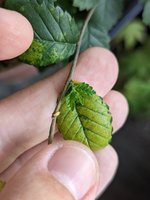proninyaroslav
Mame
It all started with the fact that in the spring some of the growing points dried out, and the leaves began to turn yellow at the ends of the branches (and not vice versa). I treated it with fungicides and it helped, the leaf fall stopped (my tree history https://www.bonsainut.com/threads/s...-dry-out-and-leaves-are-deformed-on-elm.64620).
But I began to observe how the leaves on the affected branches became chlorotic or patterned, with spots similar to a virus. But, new leaves come out clean, without any spots. I'm afraid of infecting other trees...
But I began to observe how the leaves on the affected branches became chlorotic or patterned, with spots similar to a virus. But, new leaves come out clean, without any spots. I'm afraid of infecting other trees...
Attachments
-
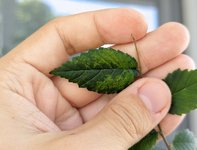 PXL_20240531_070109797.jpg123 KB · Views: 22
PXL_20240531_070109797.jpg123 KB · Views: 22 -
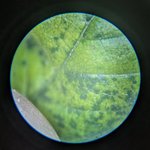 PXL_20240605_130856714_exported_1167_1717593688538.jpg163.3 KB · Views: 25
PXL_20240605_130856714_exported_1167_1717593688538.jpg163.3 KB · Views: 25 -
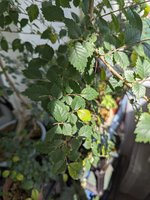 PXL_20240604_072622405.jpg186.3 KB · Views: 20
PXL_20240604_072622405.jpg186.3 KB · Views: 20 -
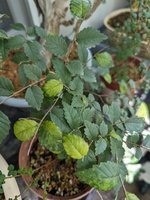 PXL_20240604_072628855.jpg176 KB · Views: 18
PXL_20240604_072628855.jpg176 KB · Views: 18 -
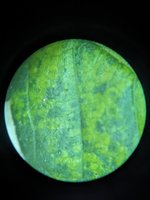 PXL_20240605_131331502.jpg99 KB · Views: 16
PXL_20240605_131331502.jpg99 KB · Views: 16 -
 PXL_20240605_131503147.jpg104.7 KB · Views: 12
PXL_20240605_131503147.jpg104.7 KB · Views: 12 -
 PXL_20240605_130740638_exported_1098_1717593714203.jpg214.7 KB · Views: 13
PXL_20240605_130740638_exported_1098_1717593714203.jpg214.7 KB · Views: 13 -
 PXL_20240605_131051397.jpg255 KB · Views: 15
PXL_20240605_131051397.jpg255 KB · Views: 15 -
 PXL_20240605_131312462_exported_1160_1717593606721.jpg145.2 KB · Views: 11
PXL_20240605_131312462_exported_1160_1717593606721.jpg145.2 KB · Views: 11 -
 PXL_20240605_130903061_exported_1032_1717593653451.jpg153.8 KB · Views: 10
PXL_20240605_130903061_exported_1032_1717593653451.jpg153.8 KB · Views: 10 -
 PXL_20240531_070148157.jpg112.1 KB · Views: 9
PXL_20240531_070148157.jpg112.1 KB · Views: 9 -
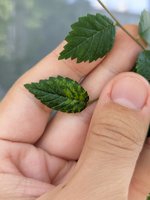 PXL_20240531_070114463.jpg108.1 KB · Views: 12
PXL_20240531_070114463.jpg108.1 KB · Views: 12


